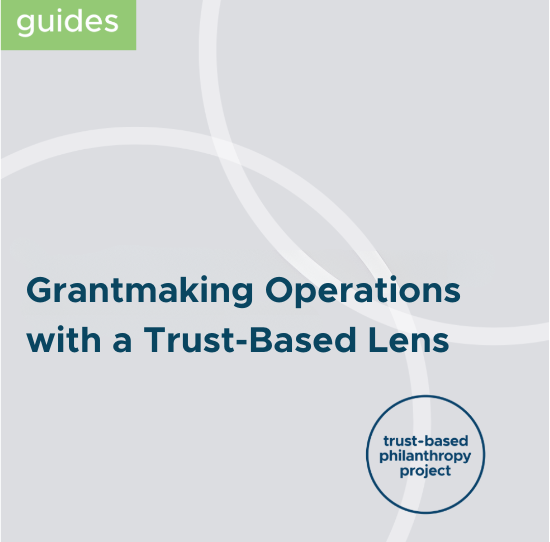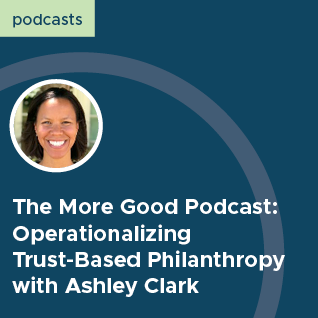
Trust-Based Structures
Trust-based philanthropy invites you to reexamine your organization's structures so that they support, rather than inhibit, your work.
The 4 Dimensions of TBP: Practices, Culture, Structure, and Leadership
Trust-based philanthropy is a holistic approach that has implications for a grantmaking institution's practices, culture, structures, and leadership. Learn more.
Many of the structures used in day-to-day philanthropy are inherited and replicated out of an allegiance to tradition rather than a commitment to an intention. That’s why it’s critical to examine your organizational structures. When trust-based values are at the center, an organization’s structures will feel aligned. When they’re not, the structures supporting the work can become barriers to advancing trust-based grantmaking practices.
For example, within your foundation, you can check for any structures that place outsized importance on your foundation's financial assets over the people you serve. This is perhaps the greatest indicator that your structures are not lining up with trust-based values.
Steps you can take:
Conduct an internal audit. Review and assess your policies and procedures to ensure that they express your values and reflect the purpose of your mission. Take into account how structural racism has shown up in your grantmaking, leadership, internal policies and HR—and work toward revising them. Be sure to ask staff, vendors, and grantees for feedback on what’s working and what’s not.
Apply an antiracist, values-based lens to hiring practices. Rather than focusing solely on applicants with graduate degrees and fancy job titles, root your hiring practices in values, competencies, and lived experience. Strive for leadership and staff representation that is reflective of the work you do and the communities you support.
Decentralize decision-making structures. Design decision-making rubrics using collective input, establish grant committees that include community perspectives, and make sure decisions are informed by multiple stakeholders.
Apply a relational lens to grant management. Are your grants management systems designed around grantee compliance and proving impact metrics? If so, they may be thwarting your team’s ability to build transparent, trust-based relationships with grantee partners. Revisit your systems to allow for emergent learning, conversational reporting, and greater flexibility in outcome expectations.
Revisit and revise job descriptions and grant contracts. Job descriptions and grant agreements can often unintentionally perpetuate top-down power dynamics. Consider how these documents can be updated to be less punitive and prescriptive, and more relational and learning-oriented.
Adopt emergent learning tools. Many grantmaking organizations are focused on capturing predetermined impact metrics, which significantly limits how we learn about the work. Instead, build emergent learning into your systems and structures—either by adopting formal tools that guide your decisions, or by informally encouraging ongoing learning discussions among staff and grantee partners.








“Trust-based philanthropy means that we’re understanding needs in the community, and that’s how we meet our mission.” -Denise Swartz